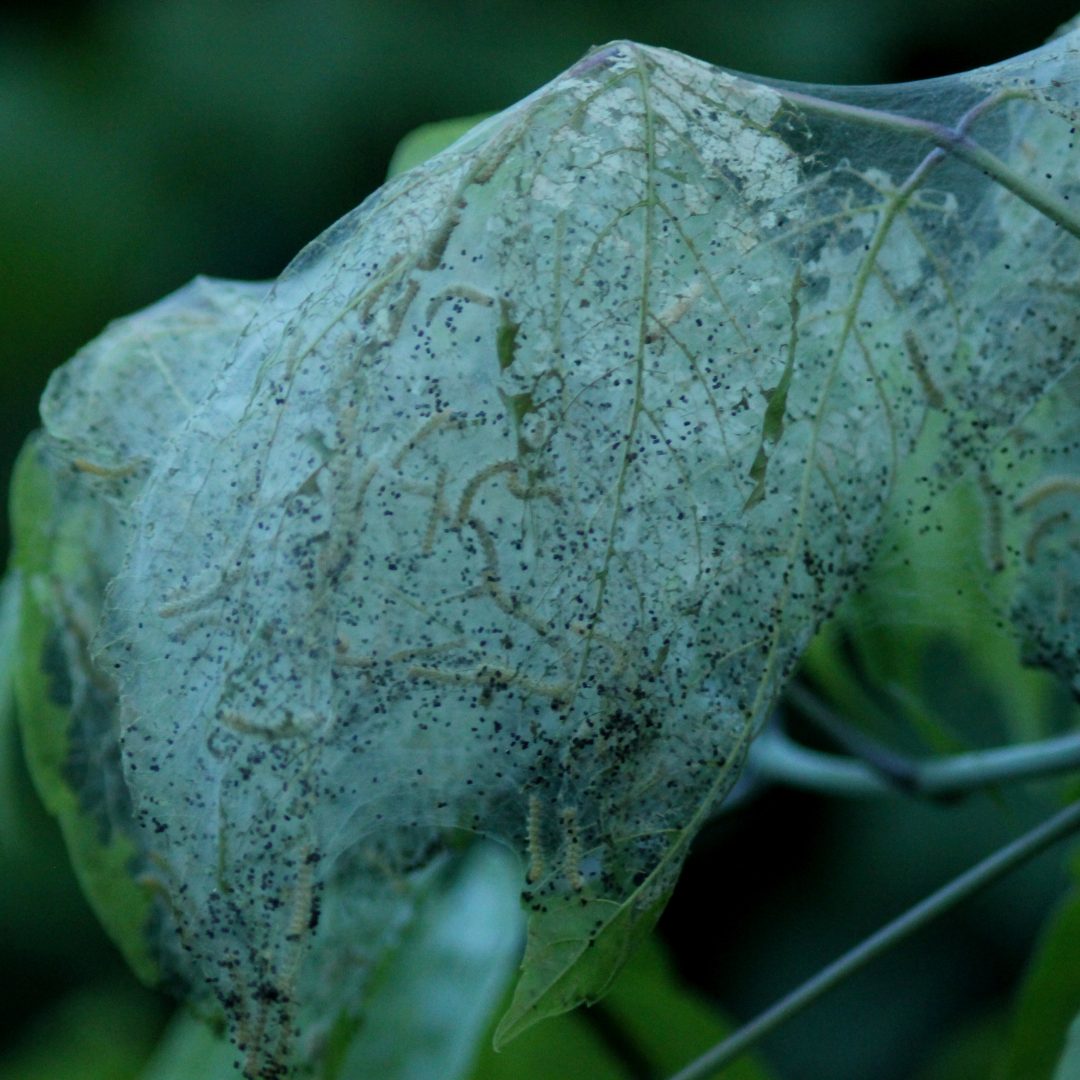Fall Web Worms
Fall Webworms are a common pest during the late summer and early fall months. These pests are known for building large, silk-like webs in the branches of trees. Fall Webworm larvae typically feed on the leaves within their webs, causing noticeable defoliation. The larvae themselves are caterpillar-like in appearance, usually covered in fine hairs with variations in color ranging from light yellow to black.
To identify their presence, there are a few key indicators to look out for. First, examine the branches and twigs of deciduous trees, such as walnut, birch, or cottonwood, for the presence of silken webs. These webs encase the caterpillars and their feeding areas. Inside the webs, the caterpillars defoliate the branch, leaving behind skeletonized leaves. Additionally, spotting actual caterpillars. As the fall webworm population grows, their webs become increasingly extensive, sometimes covering entire branches or even entire trees.
Fall webworms very rarely do serious damage to trees. In most cases the trees will grow their leaves back the following spring. On occasions, a tree that is already highly stressed may be further weakened by fall webworm damage. As a preventative measure, proper tree maintenance like regular pruning and removing dead branches can help reduce the risk of infestation. If you notice major foliage loss in your trees due to Fall Webworms, it is important to seek treatment. Pesticide can be used in more severe cases to treat Fall Webworms.
If you have an issue with Fall Webworms, Arbor Source Tree Experts can help. We will take all of the worry out of keeping your trees healthy and beautiful year round. Visit us at www.ArborSource.net to request a visit from our ISA Certified Arborist or call (832) 671-0331.
Example of Fall Webworms

